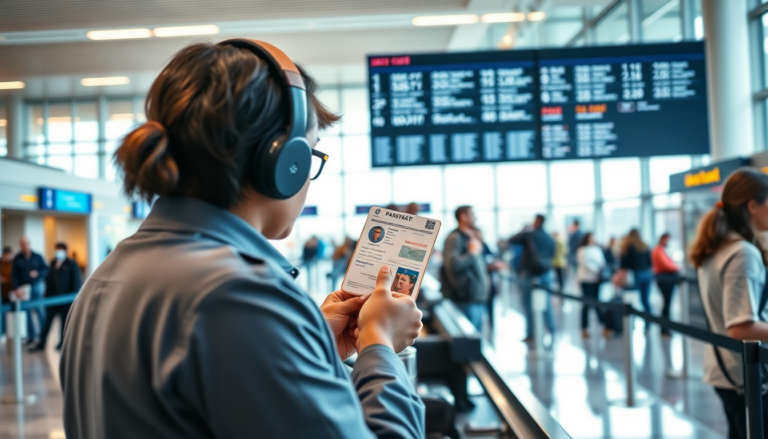Argomenti trattati
Significant changes to air travel ID requirements
Beginning May 7, 2025, air travel in the United States is set to undergo a significant transformation that will affect countless travellers. For nearly two decades, the government has been gearing up for this moment, and now it’s finally here. Starting on this date, American citizens and residents will no longer be permitted to use a standard driver’s license or state-issued ID to board domestic flights. Instead, a REAL ID, passport, or another approved form of identification will be necessary at airport security checkpoints.
Understanding REAL ID and its importance
The REAL ID is a federally compliant identification card that is issued by a state’s Department of Motor Vehicles (DMV). It adheres to new security standards established by the Transportation Security Administration (TSA). While these IDs may look similar to the current driver’s licenses or state IDs, they are distinguishable by a gold or black star located in the top-right corner. This addition signifies that the ID meets federal standards for security.
According to Adam Stahl, a senior official at the TSA, the implementation of REAL ID is a crucial step toward enhancing safety. He stated, “The REAL ID requirement bolsters safety by making fraudulent IDs harder to forge, thwarting criminals and terrorists.” This initiative aims to ensure that air travel remains secure while minimizing disruptions at airports across the nation.
ID requirements for all travellers over 18
All American travellers aged 18 and older will need to present a REAL ID or another acceptable form of identification, such as a passport or permanent resident card, to board domestic flights within the US and its territories. It’s important to note that even those enrolled in TSA PreCheck will not be exempt from these new requirements. However, children under 18 are still permitted to fly domestically without any form of identification.
How to obtain your REAL ID
For those looking to acquire a REAL ID, the process is straightforward. Travellers can visit the official government website and use a map to click on their home state or territory to find out the specific documentation required for application. Typically, individuals will need to schedule an appointment at their local DMV and bring along necessary documents that prove their identity and legal status. This may include a passport, birth certificate, or green card, as well as proof of address, such as recent utility bills or bank statements, and a social security card.
Upon applying, individuals will receive a temporary identification card while their REAL ID is processed and mailed out, which could take several weeks. It’s essential to note that the cost associated with obtaining a REAL ID can vary by state, so checking with your local DMV for the exact fees is advisable.
Consequences of not having REAL ID
Travellers who arrive at the airport without a REAL ID, passport, or another acceptable form of identification will face stricter security protocols. They may be subjected to additional screening measures and could potentially be denied boarding. As highlighted by the US Department of Homeland Security (DHS), without a REAL ID, “the TSA officer may ask you to complete an identity verification process, which includes collecting information such as your name and current address to confirm your identity.”
Other acceptable forms of ID
In addition to a passport, the DHS website specifies that an enhanced ID or a DHS-trusted traveller card, such as Global Entry, may also be presented in place of a REAL ID. However, travellers must remain vigilant, as this list is subject to updates. It’s advisable to verify current regulations with the TSA before heading to the airport.
The background of REAL ID legislation
In the aftermath of the September 11 attacks, the 9/11 Commission urged US Congress to enact the REAL ID Act to establish more rigorous security standards for driver’s licenses and other forms of identification. Although the Act was passed, the rollout of REAL ID has faced multiple delays, especially due to the COVID-19 pandemic and resistance from state governments.
While the new rule primarily affects American travellers, it is anticipated that all individuals traveling domestically may experience the repercussions of these requirements, including longer lines at airport security checkpoints. Therefore, it is recommended that travellers arrive early for their flights—ideally two hours before domestic departures and three hours before international flights—to accommodate potential wait times and additional screenings.
Stay informed for smoother travel
As the date approaches, it’s crucial for all American travellers to stay informed about these changes. Being prepared with the correct identification will help ensure a smoother travel experience. Make sure to gather all necessary documents and check your state’s DMV for details on obtaining a REAL ID.

